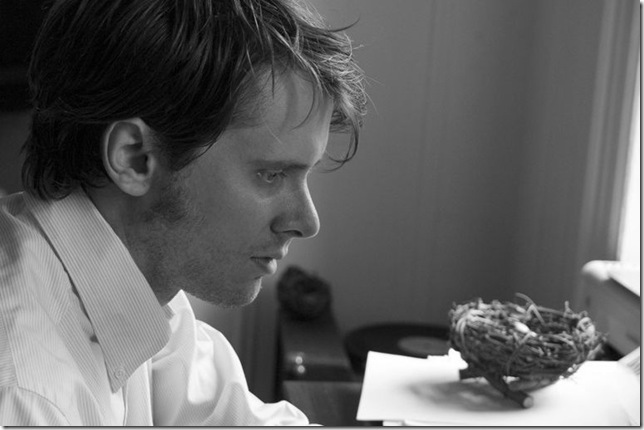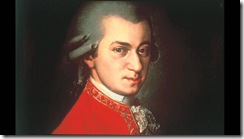It took a serious amount of artistic nerve for Seraphic Fire to commission a new completion for the Mozart Requiem, some 18 minutes of freshly composed music the choir unveiled last week at three different concerts.
Instead of going with another academic examination of the music Franz Süssmayr composed, or perhaps drew from some now-missing Mozart sketches, for the Sanctus, Benedictus and the Agnus Dei — the movements Mozart left unwritten at his death in 1791 — Patrick Dupré Quigley and his team decided to commission an entirely new three movements from a contemporary American composer, 36-year-old Gregory Spears.
It was a gutsy move to add a 21st-century voice to this work, a torso hallowed by performer and audience affection, and haunted by the tragedy of its composer’s death. But I think this gamble with history has paid off. Spears’ work, which surely should be recorded, would doubtless not be to everyone’s liking, but it succeeds.
Spears’ music for the Requiem is modern but tonally very conservative, with a minimalism that fit in well with the overall tone of the piece; it is effective for soloists, chorus and orchestra, and in a generally meaty way, which is something of a departure from the norm in contemporary composition. More importantly, it is cognizant of the drama of the work up to that point, and continues and sustains it, further expanding the mood of contemplative grief.
In the performance Nov. 17 at St. Gregory’s Episcopal Church in Boca Raton, Quigley expanded his usual choral complement to 20 singers from 13, and placed them in two 10-singer choirs on either side of the performance space, with the Firebird Chamber Orchestra sitting behind them on the church altar. Quigley led these forces in his usual brisk, forceful way, offering a Mozart of considerable sinew and power.
The men and women of Seraphic Fire sang throughout with clarity, and an excellence that was particularly in evidence during the numerous fugal sections, which never sounded muddy or rushed. The level of solo singing was also quite high, with standout moments including soprano Margot Rood’s beautiful entrance on the Te decet hymnus in the Introit, and tenor Brad Diamond’s exciting Mors stupebit in the Tuba mirum.
The Firebird orchestra was quite good as well, with, however, some string ensemble weakness in the openings of the Rex tremendae and the Recordare. But the players did an admirable job with Spears’ movements, which have been orchestrated busily and with some considerable difficulties, particularly in the second half of the Benedictus.
Spears’ music also had some less successful elements, two in particular. The advice I’ll offer for the first one might seem drawn from the pages of The Olde Chorus Master’s Handbook, but the first two movements, the Sanctus and the Benedictus, began with chorus or soloists coming in on the very first bar of the movements, as Süssmayr does in the Sanctus. And it seems to me both movements could have used a few bars of introduction, not because singers the caliber of Seraphic Fire’s roster need them, but because the audience does. It’s too abrupt a transition to go from the Handelian funk of the Hostias to the seesaw pulse of Spears’ Sanctus, and a short introduction of even two bars would have helped: to hear the murmuring B-flat minor scale pattern that opens the movement just in the orchestra would have set the mood admirably.
Similarly, a couple bars of D-flat major vamp in the Benedictus would have been useful to begin the movement, though I’d suggest something a little longer, perhaps something in the winds using the turn figure around which the chief melody is built. The movements follow too closely on each other without those introductions, and with the mood shifts within the movements, it helps the audience know where things are so they can take them in.
Also, while Spears’ writing is compelling and skillfully assembled, he tends to write attractive but somewhat noncommittal melodies, phrases that sound generally lovely, but don’t have quite enough shape to be memorable: the Hosanna section of the Sanctus, for instance. He used one of the cadential tags from Süssmayr’s Benedictus in the Agnus Dei, and it stood out, not just because we know it from years of hearing Mozart, but because the phrase itself has an evocative, distinctive contour.
But these are minor or very subjective points, and they don’t negate Spears’ achievement here. He has written a substantial and interesting contribution to the Requiem, and its provocative stylistic mix of past and present suggests a paradigm that would be useful for other composers to follow.
The concert opened with a funeral motet by J.S. Bach, O Jesu Christ, mein’s Lebens Licht (BWV 118), sung serenely and with a gently driving pulse, a good introduction to the Requiem performance. The concert ended with a too-rarely heard treasure, Felix Mendelssohn’s Verleih und Frieden gnädiglich, a beautiful prayer for peace, sung with a quiet intensity by the choir and played with radiance by the orchestra, particularly the cellos, who have such an important part to play in this choral gem.
Angels We Have Heard on High, this year’s Christmas concert by Seraphic Fire, is set for Wednesday, Dec. 11, at St. Sophia Greek Orthodox Cathedral; Thursday, Dec. 12, at St. Gregory’s Episcopal Church, Boca Raton; Friday, Dec. 13, at First United Methodist Church, Coral Gables; Saturday, Dec. 14, All Souls Episcopal Church, Miami Beach; Sunday, Dec. 15 at All Saints Episcopal Church, Fort Lauderdale; and Tuesday, Dec. 17, Sunshine Cathedral, Fort Lauderdale. Tickets are $55. The Boca Raton and All Saints shows are sold out. Call 305-285-9060 or visit www.seraphicfire.org.
***
As a further service to our readers, here is the review above in Spanish translation:
Conmovedores movimientos le dan al Requiem de Mozart un nuevo triunfo
Tomo una seria cantidad de nervio artistico para que el Seraphic Fire comisionara un nuevo final del Requiem de Mozart. El coro desvelo unos 18 minutos de musica recien compuesta en tres diferentes conciertos la semana pasada.
En vez de abordarlo con otro analisis academico de la musica que Franz Süssmayr compuso, o quizas saco de los perdidos bosquejos de Mozart para el Sanctus, Benedictus y el Agnus Dei (los movimientos que Mozart dejo sin terminar al morir en 1971) Patrick Dupré Quigley y su equipo decidieron comisionar tres movimientos completamente nuevos del compositor americano Gregory Spears, de 36 años.
Fue una jugada audaz el añadir una voz del siglo 21 a esta obra de por si ya santificada por el afecto del interprete y la audiencia y poseida por la tragedia de la muerte de su compositor. Pero esta apuesta con la historia ha valido la pena. El trabajo de Spears, el cual deberia ser grabado, sin duda no sera del agrado de todos pero si triunfa.
Su musica para el Requiem es moderna pero tonalmente bien conservativa con un minimalismo que encaja bien con el tono general de la obra. Es eficaz para solistas, coros y para orquesta de una manera jugosa, lo cual rompe con la norma de la composicion contemporanea. Mas importante aun es que se percata del drama de la obra hasta ese momento, lo continua y lo sustenta asi prolongando el ambiente contemplativo de afliccion.
En la interpretacion del 17 de Noviembre en la Iglesia Episcopal San Gregory en Boca Raton, Quigley expandio su acostumbrado componente coral de 13 cantantes a 20 y los coloco en dos coros de 10 a cada lado del escenario, con la orquesta Firebird Chamber sentada detras de ellos en el altar. Quigley guio estas potencias con su dinamismo usual y manera energica, ofreciendo un Mozart de notable poder y vigor.
Los hombres y mujeres del coro Seraphic Fire cantaron con claridez y una excelencia que se hizo obvia particularmente durante las numerosas fugas que nunca sonaron apresuradas ni turbias. El nivel de los solos fue superior tambien y los momentos sobresalientes incluyen la bella entrada de la soprano Margot Rood con Te decet hymnus en el introito y la emocionante Mors stupebit en el Tuba mirum por el tenor Brad Diamond.
La orquesta Firebird tambien toco muy bien excepto por una que otra debilidad por parte del conjunto de cuerdas al comienzo del Rex tremendae y el Recordare pero los musicos hicieron un trabajo excelente con los moviemientos de Spears, los cuales han sido arreglados afanosamente y con notables dificultades, sobre todo en la segunda mitad del Benedictus.
La musica de Spears tambien tuvo elementos menos exitosos; dos particularmente. El consejo que ofrecere para el primero puede parecer sacado de las paginas del Manual del Maestro de Coro Antiquisimo (The Olde Chorus Master’s Handbook) pero los dos primeros movimientos, el Sanctus y el Benedictus, comenzaron con coro o solistas entrando en la misma primera barra de los movimientos asi como Süssmayr hace en el Sanctus. Y me parece que ambos movimientos pudieron haberse beneficiado de unas cuantas barras de introduccion no porque los cantantes del calibre del Seraphic Fire las necesitaran si no por el publico. Es una transicion muy brusca el ir de la onda handelista en las Hostias al pulso subibaja del Sanctus de Spears. Una introduccion corta, hasta de dos barras, hubiera ayudado. Haber escuchado el murmulleo del si bemol menor que inicia el movimiento en la orquesta hubiera creado el ambiente formidablemente.
Semejantemente, unas cuantas barras de re bemol mayor en el Benedictus hubieran ayudado con el inicio del movimiento, aunque yo sugeriria algo mas largo, tal vez con los instrumentos de viento usando la figura central alrededor de la cual la melodia principal esta creada. Como tal, los movimientos se prosiguen muy de cerca uno tras otro sin esas introducciones. Los cambios de animo en los movimientos, ayudarian al publico situarse dentro de la obra y asimilarla.
Mientras que la composicion de Spears esta arreglada majestuosamente y habilmente, este tiende a componer melodias atractivas pero evasivas, frases que suenan bonitas pero que no tienen lo suficiente para ser inolvidables: por ejemplo, el Hosanna del Sanctus. Empleo una de las cadencias comunes del Benedictus de Süssmayr en el Agnus Dei, y sobresalio, no porque la conocemos de haber escuchado a Mozart por años si no porque la frase de por si tiene un contorno emotivo e inconfundible.
Pero estos puntos pequeños y subjectivos no niegan los logros de Spears. Ha escrito una interesante y sustanciosa contribucion para el Requiem y su estilo provocativo que mezcla el pasado con el presente propone un ejemplo que seria bueno que otros compositores siguieran.
El concierto comenzo con un motete funerario de J.S. Bach, O Jesu Christ, mein’s Lebens Licht (BWV 118), cantado de forma serena y con un pulso suave. Fue una buena introduccion a la interpretacion del Requiem. El concierto termino con un tesoro que se escucha raramente: Verleih und Frieden gnädiglich, una preciosa oracion de paz de Felix Mendelssohn que fue cantada con intensidad y tocada radiantemente por la orquesta; sobre todo los chelos, quienes tienen un papel bien importante en esta joya coral.
Angels We Have Heard on High/Angeles que Hemos Oido en lo Alto, el concierto de Navida del coro Seraphic Fire es el miercoles, Diciembre 11 en la St. Sophia Greek Orthodox Cathedral; jueves, Diciembre 12 en St. Gregory’s Episcopal Church, Boca Raton; viernes, Diciembre 13, en First United Methodist Church, Coral Gables; sabado, Diciembre 14, en All Souls Episcopal Church, Miami Beach; domingo, Diciembre 15 en All Saints Episcopal Church, Fort Lauderdale; y el martes, Diciembre 17, en Sunshine Cathedral, Fort Lauderdale. Las entradas cuestan $55. Las entradas para el concierto de Boca Raton y de Fort Lauderdale ya estan agotadas. Llame 305-285-9060 o visite www.seraphicfire.org.

